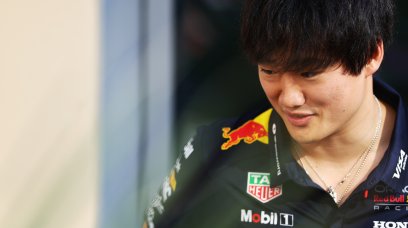As part of the investigation into the closing laps of the 2021 Abu Dhabi Grand Prix, a meeting of the Sporting Advisory Committee (SAC) was scheduled for Wednesday, 19 January, to discuss the use of the Safety Car. The use of the Safety Car, and how it was withdrawn, is the main point of contention from the title-decider. FIA Race Director Michael Masi made the call to bring the Safety Car out on track to cover the clean-up of Nicholas Latifi's crashed Williams, but it was the handling of the withdrawal that has caused a huge amount of controversy.
F1's controversial Abu Dhabi Grand Prix
The controversial decisions made by Masi were that he only allowed five lapped cars, the ones between race leader Lewis Hamilton and second-placed Max Verstappen, to unlap themselves. This meant that three cars, Daniel Ricciardo, Sebastian Vettel and Mick Schumacher, were foced to stay a lap down. Masi also appeared to ignore the Sporting Regulation relating to how the Safety Car is withdrawn (Article 48.12), with the rulebook saying the Safety Car should come into the pits at the end of the lap after the lapped cars are released. This would have meant the final lap of the Abu Dhabi Grand Prix being run behind the Safety Car. It was Masi's decision to return to green flag conditions at the end of the penultimate lap which allowed Verstappen, on fresh tyres, to attack Hamilton and take the lead and the title. According to the regulations, that shouldn't have happened, although a later appeal from Mercedes resulted in the stewards ruling that Masi had followed a separate regulation (Article 15.3.e) which gave him the ultimate authority on how to control the Safety Car withdrawal. Since Abu Dhabi, it's become clear that certain rules need to be clarified, in writing, as part of the Sporting Regulations.
A desire to end the race under green flag conditions
In the aftermath of Abu Dhabi, it became clear that Masi had been seeking to finish the race under green flag conditions – something of a 'gentleman's agreement' between the teams, rather than a written rule. McLaren's Zak Brown, in an open letter, wrote this week that it was the teams themselves which had pushed for races to end under green flag conditions – the exact scenario that the under-fire Masi had been trying to ensure happened in Abu Dhabi. "Let us not forget that we, the teams, have contributed to the inconsistencies in the policing of the regulations as much as anyone," he wrote. "It is the teams who applied the pressure to avoid finishing races under a Safety Car at all costs. It is the teams who voted for many of the regulations they have complained about." The FIA review of the race, including the SAC meeting on Wednesday, will evaluate whether the processes Masi followed were in accordance with the regulations, something which the stewards in Abu Dhabi ruled he had. What is important is that the 'grey area' of trying to end a race under green flag conditions, a scenario that, supposedly, all the teams desire, is written into the rules to ensure that the Race Director isn't seen as anything but a neutral observer and adjudicator of the races – Masi's actions being viewed by a worrying number of fans as anything but. To this end, the committee meeting on Wednesday will be followed by a "shared discussion with all F1 drivers".
What's likely to change in the future?
As part of the FIA investigation into Abu Dhabi, it's highly likely that certain aspects of the use of the Safety Car during a race becomes more regulated. The wording of the withdrawal of the Safety Car needs to be clarified in the regulations, with no grey area that can be left open to the interpretation of race officials. The manner in which a race goes back to green flag conditions, when close to the end of a race, also needs proper clarity. If the desire to return to green flag conditions before the final lap is as clear-cut as Brown alleges, the requirements for that contingency needs to be clearly worded, rather than leaving the Race Director open to criticism for trying to make a behind-the-scenes agreement work. Another change needed would be to solidify the wording of the regulations, such as the argument that "any" doesn't mean "all", as Red Bull famously used in the stewards' room after Abu Dhabi. Other areas of Safety Car use that could be examined is that of drivers pitting under Safety Car or Virtual Safety Car conditions. Over the years, it's added a certain amount of luck and an element of a lottery to a race, with drivers moving up or losing position simply based on the timing of a Safety Car. With cars no longer in danger of running out of fuel due to the scrapping of refuelling for 2010, perhaps it's time F1 re-evaluated closing the pit lane during race interruptions – with the obvious exceptions of allowing stops for damage repairs or tyre changes based on demonstrable safety concerns. The findings made by the FIA in light of the ongoing investigations and discussions will be presented to the F1 Commission in February, before going on to the World Motor Sport Council in Bahrain on 18 March.
Most read








